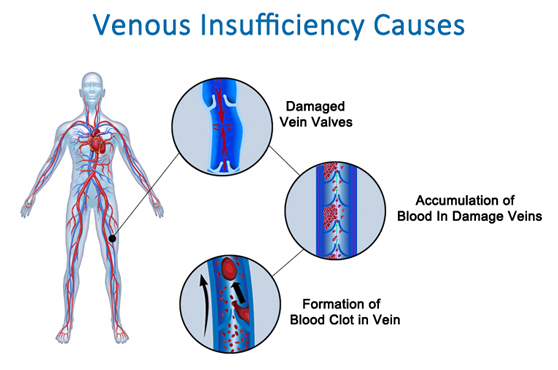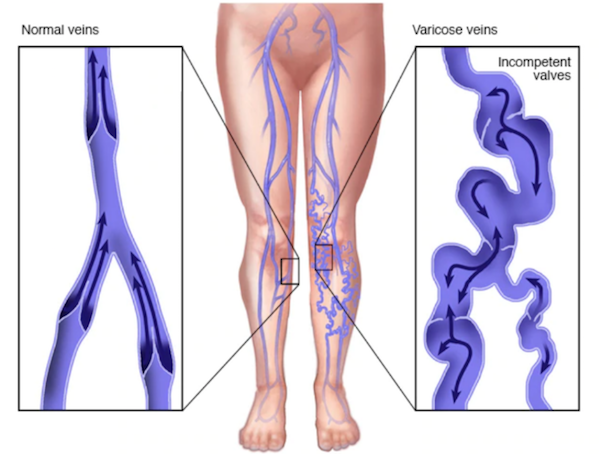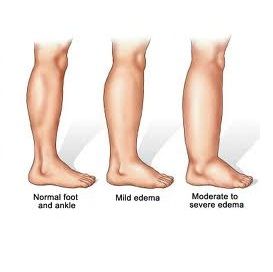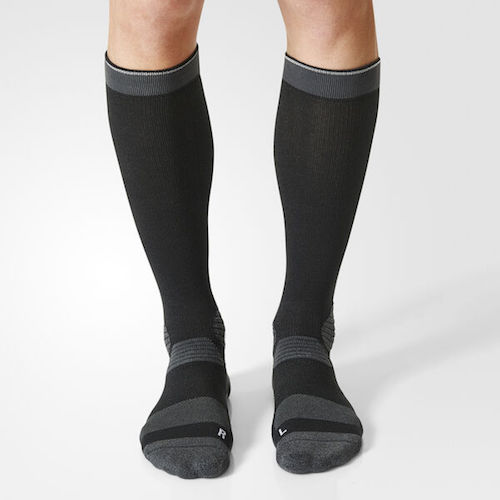What Are Compression Socks For?
German engineer Conrad Jobst and Dr. Otto Gauer invented compression socks in the early 1950’s. Today, there is a whole world of compression wear on the market like compression stockings, sleeves, and tights. But among all of them, compression socks and stockings are the most common because they are great alternatives to everyday socks and pantyhose.
Fast forward to today. Compression socks are now used to prevent and treat all kinds of problems, as well as boost athletic performance in healthy people.
So let’s talk about it: What are compression Socks Used For?

Compression socks prevent and treat diseases related to poor circulation from illness or prolonged standing or sitting daily. Most occupations require that a person either sit or stand for more than eight hours each day. Think about jobs like office workers, nurses, police officers, teachers, or wait staff. The list can go on and on and includes me, you, and nearly everyone else you know.
What diseases do compression socks prevent?
At the end of a long workday, you find your legs, ankles, and feet aching and swollen. The aches and edema are caused by not enough movement by the lower extremities, causing the poor circulation of your blood flow back to your heart. Your body struggles against the law of nature, the gravitational effect to get blood back where it belongs. So, what happens when you disrupt your blood circulation? If you keep avoiding treatment, your blood vessels in your legs will develop venous reflux disease.
Venous Reflux Disease

Venous reflux disease, also known as chronic venous insufficiency, is a medical condition affecting blood flow to the lower extremities. Normally, one-way valves in the veins keep blood flowing toward the heart against the force of gravity. When the valves become weak and do not close properly, they allow blood to flow backward, and this is a condition called reflux. When the blood starts pooling in the veins, it can cause them to stretch. When the veins become distended or twisted, varicose veins develop.
Varicose Veins

When blood pools in the lower legs, the pressure causes the veins to swell, twist, and weaken the walls. Varicose veins can occur in various parts of the body but frequently occur in the legs. They might appear as clusters of blue or purple veins visible underneath the skin and near thin red capillaries known as spider veins. Varicose veins are often a symptom of a deeper problem.

What are the Symptoms of Varicose Veins?
- Veins appear to be dark purple or blue
- Vessels protrude from the skin like lumpy earthworms
- Swelling, discoloration, and skin peeling in the lower extremities
- Experiencing sensations in legs like itching, numbness, tingling muscle cramping, and burning.
- Increased skin temperature and tenderness in legs
- If varicose veins progress, serious diseases like gangrene and ulcers may occur.
Compression socks and stockings are also excellent at treating edema and Deep Vein Thrombosis (DVT)
Edema

Edema is the medical term for swelling, the accumulation of fluid in the space outside the blood vessels. Microscopically, the fluid hangs out between the cells and connective tissue. The most common causes of edema are lack of exercise and poor muscle endurance. Edema can affect a small area of the entire body, and the most common parts are the lower limbs. It is worth mentioning that medication, pregnancy, infections, and many other medical problems can cause edema too.
Deep Vein Thrombosis (DVT)

Deep Vein Thrombosis is a blood clot in the lower limbs that prevents normal blood flow. DVTs may cause the legs to be painful or swollen, but it may also be asymptomatic. While the condition is usually not life-threatening, it can be if the blood clot breaks free and floats to the lungs.
There are other diseases associated with poor circulation in the legs, including lymphedema, phlebitis, and lipodermatosclerosis.
Why Are Compression Socks Useful For The Legs?
Compression socks and stockings combat all the above and more without having to go through surgery. They are also known as circulation socks. While compression socks might look like ordinary socks, they function under completely different principals.
Compression socks gently squeeze your legs and exert compression pressure to help the blood vessels to work more efficiently to carry oxygenated blood. Stockings improve blood flow and prevent the above diseases from developing.
Wearing compression stockings helps heal the legs after exercise. Compression socks also improve ulcerative skin that darkens and hardens over time and restores the twisting veins. So, if poor blood circulation is the villain, then compression socks are the heroes.
Popular Articles on ComproGear
Best Compression Socks for Sitting All Day? Compression Socks for Sitting
Who should wear Compression Socks?

- They are great for athletes, especially runners, to wear during training to help alleviate delayed-onset muscle soreness.
- Pregnant women wear them to help eliminate lower limb edema and varicose veins during the third trimester and to prevent DVT after delivery.
- Patients with limited mobility should wear them to prevent DVTs.
- People with obesity should consider wearing them to help promote better blood circulation.
- Passengers that fly frequently should wear them during their flights to treat and prevent the infamous Economy Class Syndrome (DVT).
Anyone can wear compression socks if you choose the pressure level that suits your needs. Consider choosing compression levels of 15-20 mmHg to start to treat your daily soreness and aching of your legs during long shifts.
Anything above the compression level of 20 mmHg is medical grade and requires a prescription. If you have a medical condition, consult a doctor for an order and compression level specification. Wearing compression socks is like eating french fries, but wearing one that is right for you is like cheese fries- better!
Do you Wear Compression Socks to Bed?
Bear in mind that there is no need to wear compression socks to sleep. When you lie down, your legs and heart are on the same horizontal plane, so you do not need to help your blood flow back to your heart. On the other hand, if you wear compression socks to sleep, it can interfere with blood circulation.
Continually relying on compression socks can force your body to become dependent on the support. Your muscles may become weak, and your joints become vulnerable when you stop wearing compression socks.
Should I wear Compression Stockings instead of socks?
Compression socks are fantastic alternatives to everyday socks. However, they are medical tools that improve your health, and you should treat them as such. Try compression socks from our store and give your health a boost!
This page last updated December 15, 2022
